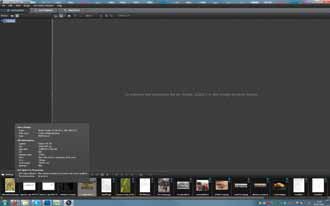articles/Review/filmpack-page6
DxO Optics Pro 8 and Filmpack 4 - part 6 of 1 2 3 4 5 6
by Mike McNamee Published 01/10/2013

The image metadata pops up in the organiser pane which is always useful when reviewing images.
A variety of toning styles includes gold, selenium, sepia and ferric sulphate.
Grain, specific to a film type, may be added and the format (eg 35mm, medium-format, large-format) is also taken into account.

The interface for Filmpack. With strength sliders and many dozens of options, the possibilities are more or less limitless. Image John Baikie
The monochrome channel mix may be varied using six standard primary colours. Vignetting and blurring may be varied in intensity, size and also the centre of the effect may be altered. A total of 19 frames are available along with textures (cracked paper, scratches, etc) and finally a mimic of light leak.
This lot should keep you amused for hours!
Overall
Our initial (and, in truth, longstanding) scepticism about DxO has been transformed; it is an impressive piece of software which does an excellent job of improving the processing of Raw image data in a hardware-specific and selective way. Some of the processing may be mimicked (but not equalled) by skilled Photoshop/Bridge/ACR users but the simplicity makes DxO very attractive. The lack of cmyk support is a problem for graphic designers but they have to have the Adobe Suite anyway so it is only a minor problem to them. For all others, and especially people with the latest DSLRs who refuse to bow down to Adobe's upgrade demands, it is a godsend.
Please Note:
There is more than one page for this Article.
You are currently on page 6
- DxO Optics Pro 8 and Filmpack 4 page 1
- DxO Optics Pro 8 and Filmpack 4 page 2
- DxO Optics Pro 8 and Filmpack 4 page 3
- DxO Optics Pro 8 and Filmpack 4 page 4
- DxO Optics Pro 8 and Filmpack 4 page 5
- DxO Optics Pro 8 and Filmpack 4 page 6
1st Published 01/10/2013
last update 09/12/2022 14:54:14
More Review Articles
There are 0 days to get ready for The Society of Photographers Convention and Trade Show at The Novotel London West, Hammersmith ...
which starts on Wednesday 15th January 2025





